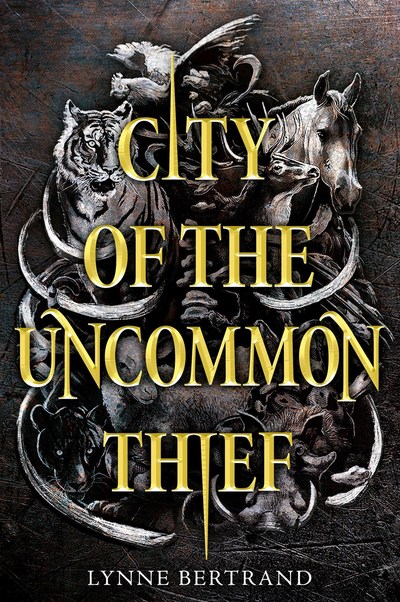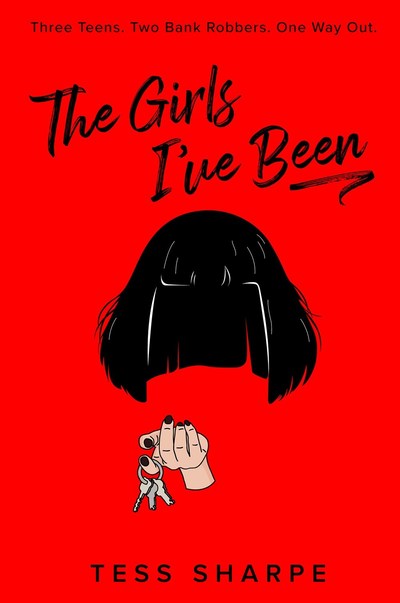Set in a walled, quarantined city made of a thousand towers, Lynne Bertrand's City of the Uncommon Thief is the story of three teenagers who find themselves drawn into a tangled web of lies and magic after one of them steals a pair of “uncommon” knitting needles, or “knotting spikes,” as they’re called in the book’s unique parlance. Bertrand reveals how she created the world of the novel, which is one of the most unusual fantasy settings you'll ever read.
Your previous books were picture books. Why did you begin writing young adult?
My initial idea was a picture book about a mob of urban waifs living in a gone city and their discovery of a cellar full of knitted animals that were alive. That story was too much to be contained in a picture book’s short form, so over the years, I took it apart and reworked elements of it.
In YA fiction, you can go anywhere, use all the words, consider with honesty any thought. To be 13, 15, 17 is to be human times 10. It’s a time of unprotected freedom, death, work, love. That’s a good place for a writer.
One of the questions in the book is what or who is “common” or “uncommon.” What drew you to this idea?
I think of City as a reluctant fantasy. I didn’t intend to include anything magical, but I felt about the knotting spikes the way Bilbo feels about his ring: I had to have them.
At the same time, I was determined to keep it under control, to understate that magic. I felt the whole city’s agreement with me on that. Nobody wants any trouble in the city. Nobody wants anything out of the ordinary to happen, because this is already a disastrous, walled-in non-place, and everyone is hanging on by their fingernails. So I called the spikes “uncommon” as a way of saying “nothing to see here,” nothing magical or rare or stupendous or otherworldly. As soon as that word, uncommon, was on the page, it became a way of exploring the things we dismiss. It’s easier to sort and discard in some binary way (common versus rare) than to look twice and see what a rare thing some piece of art, some story, some idea, some person, some animal, some tool, really is.
Stories can change the world, carry you through hell, bring levity, remind you of what’s possible.
How did you go about creating the setting of the city?
What would it be like to stay inside forever? How would you get food if you couldn’t go out? What if something scared you so much you locked the doors and, for centuries, never unlocked them? What if you didn’t know where you were in place or time? Those questions were on my mind.
And then I let the city manifest those questions. Buildings too high. Locks too permanent. Food once a year. Work that had to save you. Holidays celebrating the sunless passing of time. Social constructs that kept everyone just sane enough. And then I thought about what the children would do and what the teenagers would do in such a construct.
What works inspired this book?
The biggest influences were the epics and myths I read in school, especially tales of the Greeks and Romans, and most of all The Odyssey. I didn’t even realize what I was writing with this book until I recognized fragments of an invocation to the muse, of a beginning in medias res, of a hero story, of wisdom characters. My efforts then became more intentional—to write on a grander scale, to add a representative from some sort of pantheon that had been lacking, to get comfortable with a vast map. I love the nostalgia, the big genealogies, the journey, the question of heroism and the clash of good versus evil in epics and legends. In such stories, or in a city the size of this city, once you let go and face the things that frighten you, you’re as gone as Odysseus. You have to tie yourself to the mast or outsmart the Cyclops in the cave, because how else are you going to get home?
Storytelling is a key cultural practice in your book. Why?
My father is a preacher. Like anyone who’s grown up in a temple, mosque, church or synagogue, I was a child of “The Book.” Narrative is the treasure, the currency of sacred cultures. If the house is on fire, you grab the Book on your way out.
In college when I studied the Bible as literary narrative, it was like discovering secret passages in a house I grew up in. Of course, I was also reading other books all my life. What began as faith through narrative extended to become another kind of faith in narrative. Stories can change the world, carry you through hell, bring levity, remind you of what’s possible.
ALSO IN BOOKPAGE: Read our starred review of City of the Uncommon Thief.
I was fascinated by the way you subverted notions of heroism—what a hero looks like, what they’re called, where they come from. What do you think makes someone a hero?
At 2 a.m. when I can’t sleep, I watch Instagram videos—of a cop saving a street dog off the high truss of a suspension bridge; of some powerful 20-year-old athlete hiking through the wasteland that was southeastern Australia in 2020 to save one kangaroo. I watch videos about people who choose, as their life’s work, to organize food, security patrols, showers and extra blankets for people who live in the tunnels and underpasses of a city. Generally speaking, a lot of people euthanize street dogs. Poachers jack kangaroos. A lot of us fear the disenfranchised humans who live under bridges.
I’ve never been asked this question before, but I think heroism could be described as the high-risk leveraging of your own power on behalf of someone else who doesn’t matter to plenty of other people. It involves sacrifice and has the potential to look foolish. We mainly tell the stories of heroes who succeed, but success isn’t a requisite for heroism, and there are other stories that shouldn’t be forgotten.
Photo of Lynne Bertrand courtesy of Jo Chattman.














